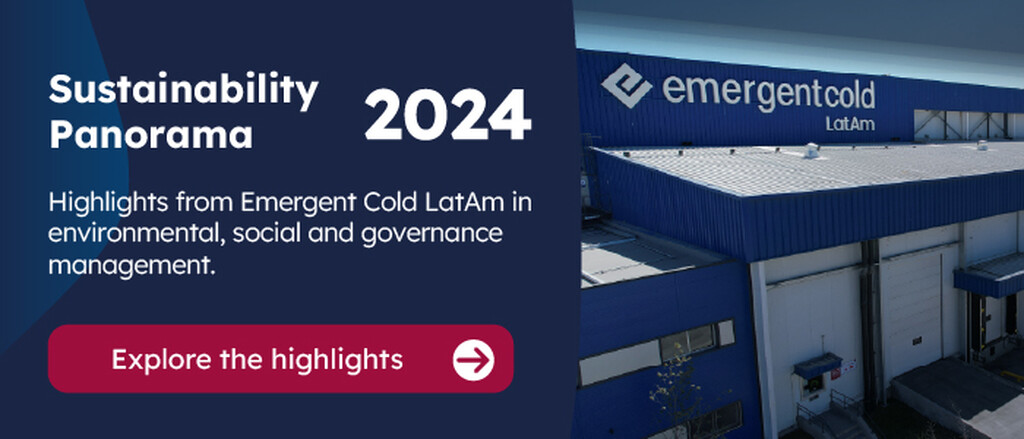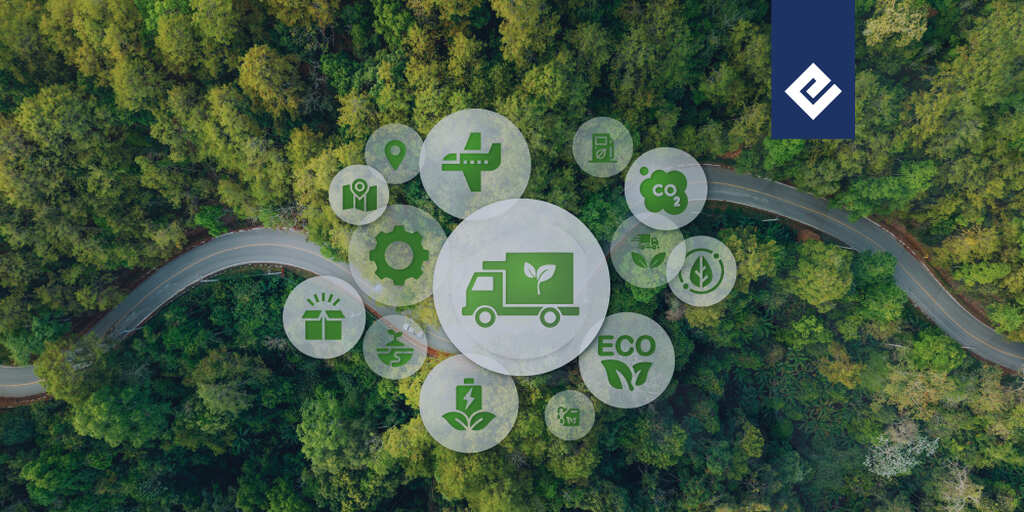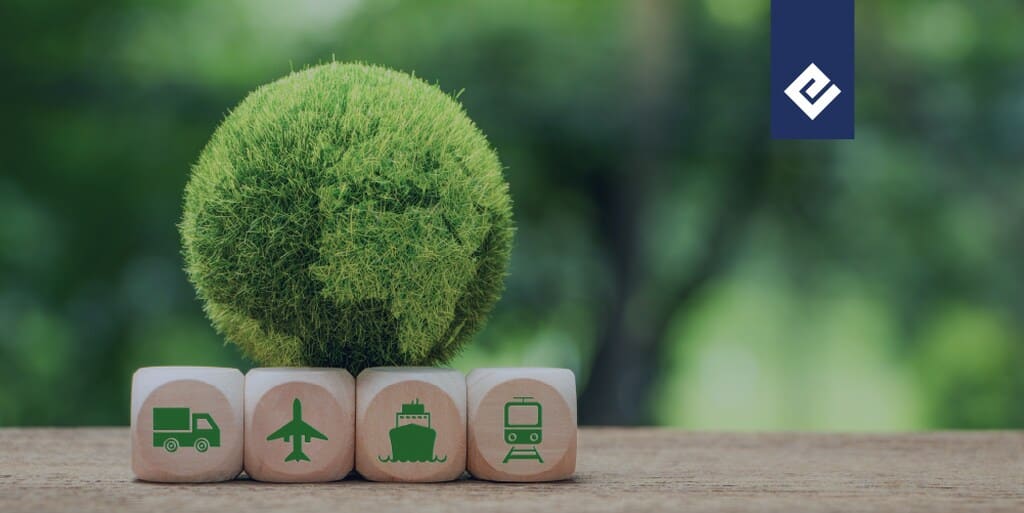Sustainability in the global cold chain is undergoing a transformation, driven by regulatory changes, and environmental commitments as well as by demand from consumers for safer, more sustainable foods.
These demands are reflected in the day-to-day business of controlled-temperature food logistics, which manages the challenges in the search for reduction in the consumption of energy and water, greenhouse gas emissions and food waste from faults in the processes.
Find out how governments, clients and logistics operators such as Emergent Cold LatAm are working not just in Latin America, but throughout the world.
Why sustainability is on the agenda of governments, clients and logistics operators
Thinking in the context of industries, the International Financial Reporting Standards (IFRS) in 2021, announced the formation of the International Sustainability Standards Board (ISSB) – set up to respond to the appeals from the Financial Stability Council of the G20, the G7 and of the International Organization of Securities Commissions (IOSCO).
With the objective of making the financial information more consistent, complete, comparable and verifiable related to sustainability and to the climate factors, the Council established a new level of transparency.
Sustainability in the cold chain is already a demand that permeates the different players in the market. For governments, it means aligning the sector with the global climate targets, reducing greenhouse gas emissions and guaranteeing food safety on a large scale.
The logistics operators see energy efficiency and the combating of waste as a way to reduce costs, increasing competitiveness in domestic and international markets, and strengthening the resilience of the operations.
Lastly, for clients, the pressure comes both from the end consumers, seeking products with lower environmental impact, and from investors seeking clear and comparable sustainability reports.
What are the principal debates in the sector on the matter
The challenge is to balance competitiveness in the market and operational efficiency with sustainability. Thus, the sector has concentrated its attention on energy efficiency, the reduction of emissions and the waste of foods.
Energy efficiency
Refrigeration is the critical point of the cold chain due to the high consumption of energy required. According to data from the Asociacion de Empresas de Frio y sus Tecnologias (AEFYT), about 15% of electrical power worldwide is used for the conservation of foods.
Thus, companies are speeding up investments in low consumption technologies, automated systems for smart monitoring and the integration of renewable sources, such as solar and wind.
In this scenario, international certifications have never made more sense as they do now. They have become a seal of credibility, guaranteeing that the operations meet the global sustainability criteria in the cold chain.
Reduction of emissions
The logistics operations in the cold chain are responsible for emissions that contribute to the greenhouse gas effect, with many measures that can be adopted. In warehouses, some examples are the adoption of LED lighting, refrigeration systems using low climate impact gases, solar panels and sustainable construction.
In the transport, priority actions have been fleet modernization, the adoption of biofuels and electric vehicles.
Reduction of food waste
One of the leading items on the global agenda is the combating of food waste throughout the logistics chain. According to data from the Food and Agriculture Organization of The United Nations (FAO), one third of foods in the world are wasted, and a significant part of this loss is linked to unsuitable logistics process.
How Emergent Cold LatAm is working on sustainability
Sustainability is one of our key values, and we are conscious that we can reduce the impacts of our operations on the environment and in the communities where we are active.
From our foundation in 2021, we have worked to progress on environmental, social and governance matters.
Efficiency
In 2024, of all the energy consumed in the company, 60% was from renewable sources. This demonstrates our commitment to operate with energy efficiency, even with an increase of 14% in the energy capacity of our warehousing in the period.
Solar energy
We are investing in the installation of solar panels in our plants. Through the year 2024, the number of plants with solar panels tripled, going from five to 15. Our installed capacity reached 11.926 MW last year.
Greenhouse gas emissions
Indirect emissions (Scope 2), related to the consumption of electrical power in our own warehouses and those rented and operated by us, were reduced by 9.23%, even with an increase of 14% in the energy capacity of our warehousing in the period.
Reuse of water
We tripled the volume of water reused in our operations in 2024. We have also invested in technology and systems to reduce waste in our plants. We are seeking to reduce the total consumption of water by 20%.
One of the ways we have used to achieve this objective is the application of sustainable construction to an ever increasing number of warehouses.
Sustainable constructions
The EDGE certifications (Excellence in Design for Greater Efficiencies) seek to promote more sustainable and efficient constructions throughout the world in terms of use of resources.
In 2024, the warehouses with these certifications represented 13.16% of the total, which shows the great challenge and the opportunities for progress in relation to the optimization in the use of water resources.
Our plant in San Pedro de La Paz, in Chile, was highlighted as representing the first controlled-temperature foods warehouse in the whole world to receive the EDGE Zero Carbon certification (the highest degree conferred to a construction by EDGE, seeking to maximum efficiency in energy consumption and compensations of carbon emissions).
Waste management
One highlight in waste management is the significant increase in recycling done at our plants or sending of different types of materials for recycling. In 2024, the total number of tons of materials no longer thrown out increased by 25 times.
Combating food waste
Part of our proposed contributing to the reduction in food waste in the world is a priority matter. The volume of foods warehoused in our installations in 2024 was 2.5 million tons, an increase of 8.7% in relation to the previous year.
The move to -15ºC Movement
In 2024, Emergent Cold LatAm was the first company in Latin America to join the global movement The Move to -15°C. The objective is to defend the raising of the standard temperature for warehousing of frozen foods from -18°C to -15°C, generating benefits both for the sector and for the environment.
Conclusion
Companies that invest in energy efficiency, reduction of emissions and smart management of resources not only attend to regulatory and environmental expectations, as well as strengthening competitiveness and operational resilience.
Working with logistics operators who have already applied these solutions means guaranteeing more efficient, reliable operations better prepared for future challenges, transforming sustainability into a real competitive advantage for the whole supply chain.
To find out more details on all the initiatives and results in sustainability of the cold chain, access our Sustainability Panorama 2024.







